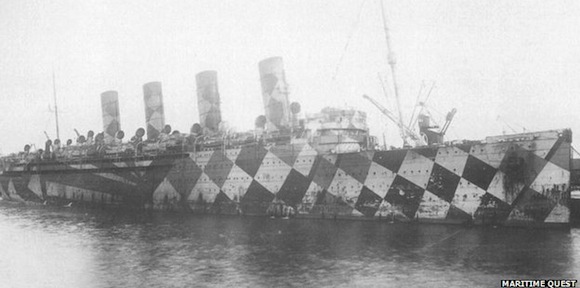
RMS Mauretania, one of the most famous ships to be built on Tyneside, was launched amid great fanfare in 1906.
The luxury liner was famous for its speed, for many years holding the record for the quickest trans-Atlantic crossing.
What is less well known is the vital role it played in World War One.
During the Gallipoli campaign it served as a troop carrier and hospital ship, later transporting soldiers across the Atlantic when America joined the war.
RMS Mauretania was built for Cunard at the Swan Hunter yard in Wallsend, and launched in 1906, with the maiden voyage taking place the following year.
Maritime historian, Ken Smith, said: "She represented all that was best on Tyneside; skills, energy, technical know-how.
'Very expensive'
"But she was a also a very special ship because she held the Blue Riband for the fastest crossing of the Atlantic longer than any other early 20th Century liner.
"In fact, she was built with a government grant because it was intended that she would serve as an armed auxiliary cruiser should war break out.
"That never happened, but she still proved to be immensely useful."
Ian Whitehead, keeper of Newcastle's Discovery Museum, said that it was a while before the vessel was pressed into the war effort.
"She was very fast but also very expensive to run, so really only came into her own when you wanted to move a lot of people very quickly over long distances.
"So she was not working until 1915 when there was a requirement to take troops to the Dardenelles for the Gallipoli campaign.
"Then rather sadly, once the campaign had failed, she was kitted out as a hospital ship to bring the casualties back, as they had so many they couldn't evacuate them fast enough."
'Dazzle camouflage'
This role required adaptations to the liner's interior and exterior.
"She had large green bands along her side and huge great red crosses to indicate she was engaged in peaceful and humanitarian mission", he said.
"They actually covered up a lot of her lovely elaborate wood carvings and woodwork with protective metal and wood
"Her top accommodation was converted into wards and the wounded men were accommodated as high up in the ship as possible in swing cots so they can get to the boat decks if there was an emergency, such as a torpedo strike."
On return to duty as a troop carrier, RMS Mauretania was painted in a striking blue and white diamond pattern, one of the dazzle camouflage designs.
These were devised to make it difficult for U-boat commanders to gauge the ship's direction of travel and speed, so they were more likely to miss their target.
Late in the war the vessel was painted with dazzle camouflage to make it a less easy target
RMS Mauretania made a number of Trans-Atlantic runs, transporting first Canadian then American soldiers, returning them home at the end of the war.
The vessel then returned to duty as a luxury liner, and was retired in 1935.
Source: www.bbc.com

